#House of Oldenburg
Explore tagged Tumblr posts
Text

Absolute Monarchy Assigned to Frederik III in 1660
Artist: Nicolai Abildgaard (Danish, 1743–1809)
Date: 1783
Medium: Oil on canvas
Collection: Statens Mueum for Kurnst, Copenhagen, Denmark
Description
The second-eldest son of Christian IV and Anne Catherine of Brandenburg, Frederick was only considered an heir to the throne after the death of his older brother Prince Christian in 1647. He instituted absolute monarchy in Denmark-Norway in 1660, confirmed by law in 1665 as the first in Western historiography.
#painting#historical scene#danish history#frederick iii of denmark#king of denmark and norway#interior#costume#table#hat#document#men#curtains#historical art#danish monarchy#house of oldenburg#danish royal family#oil painting#canvas#artwork#fine art#danish culture#danish art#nicolai abildgaard#danish painter#european art#18th century painting
11 notes
·
View notes
Text

Cecilia of Sweden, Grand Duchess of Oldenburg (1807-1844). By Emanuel Thomas Peter.
She was the daughter of King Gustav IV Adolf of Sweden and Frederica of Baden.
#Konungariket Sverige#kingdom of sweden#house of holstein gottorp#Holstein Gottorpska ätten#Huset Oldenburg#house of oldenburg#Cecilia av Sverige#cecilia of sweden#Cecilia av Oldenburg#emanuel thomas peter
7 notes
·
View notes
Photo

The Kaiser and the Kaiserin
1898
via Wikimedia Commons
0 notes
Text
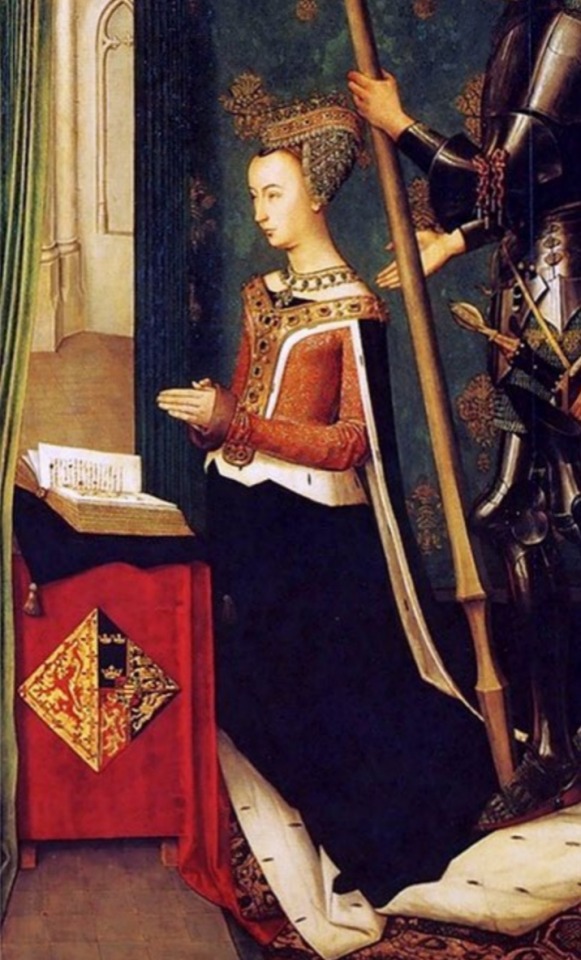
BORN ON THIS DAY:
Margaret of Denmark (23 June 1456 – 14 July 1486) was Queen of Scotland from 1469 to 1486 by marriage to King James III.
She was the daughter of Christian I, King of Denmark, Norway and Sweden, and Dorothea of Brandenburg.
0 notes
Text
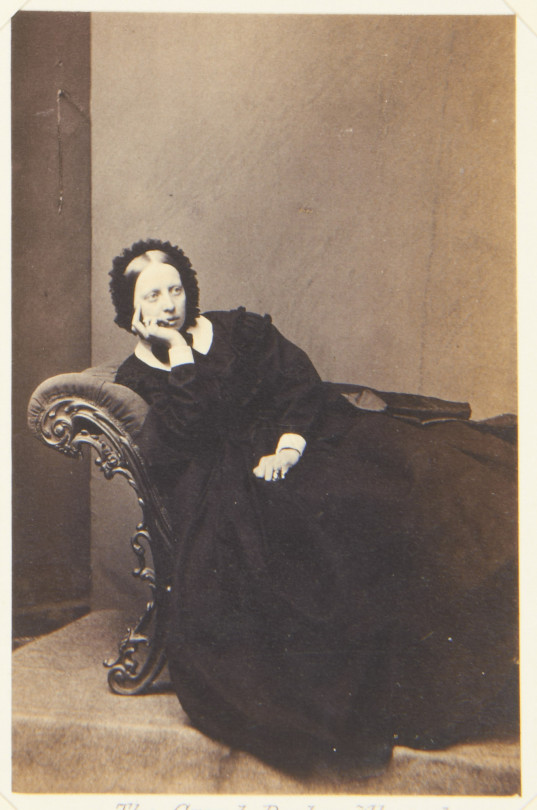
Photograph of Grand Duchess Alexandra, lying on a chaise-longue, facing towards the camera. She rests her head on her right hand and gazes to the right. She wears a dark coloured dress and dark coloured hair covering.
Source
#alexandra petrovna#the royal collection#Alexandra of Oldenburg#house of romanov#imperial russia#long live the queue
18 notes
·
View notes
Text
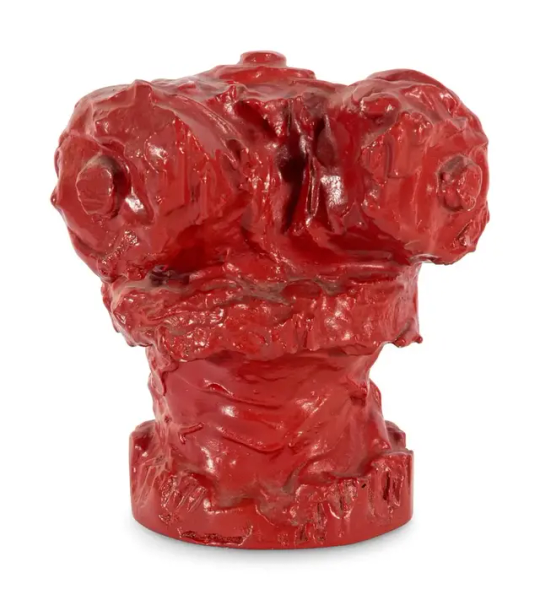
In October 1968 Claes Oldenburg and art dealer Richard Feigen quickly organized a fundraising exhibition to support the ACLU, which was defending antiwar protestors who'd been beaten and arrested in Chicago during the Democratic National Convention.
Oldenburg's idea was a quirky souvenir, but make it cobblestone-size. You know, for kids. Kids in the streets. Oldenburg said Fire Plug Souvenir — Chicago August 1968 looked like a teddy bear, but I think we can all agree those are neither eyes nor ears.
https://greg.org/archive/2023/08/26/cobblestone-sized-fire-plug-souvenir-chicago-august-1968.html
#claes oldenburg#fire plug#chicago#cobblestone-size#dust#just give me a q-tip and five minutes the auction house photographer did not say
2 notes
·
View notes
Text
Why the fuck are all of the third spaces downtown?? Suburbs is fucking shit.
#Ray Oldenburg you were so right#It's all houses and buildings everywhere#Nothing in walking distance besides the fucking movie theatre
0 notes
Text

The Oldenborg Horn, a silver drinking horn crafted in 1465. It was presumably a gift to the cathedral in Cologne from Christian I during his visit to Rome in 1474-75. After the reformation it came back into the possesion of the royal danish house of Oldenburg, and in 1690 Christian V had it moved from Oldenburg to Copenhagen.
from The Rosenborg Castle Collection, Denmark
631 notes
·
View notes
Text
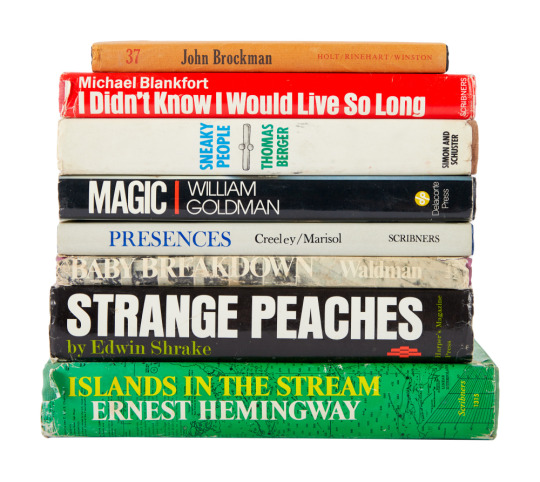
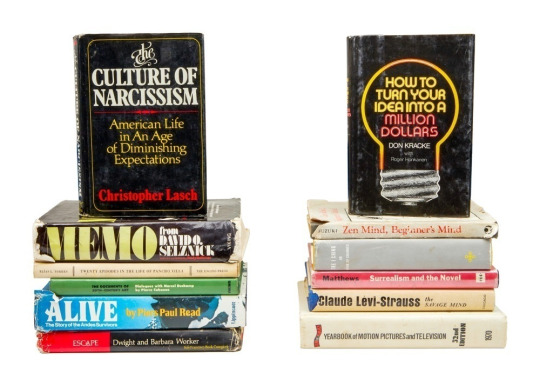
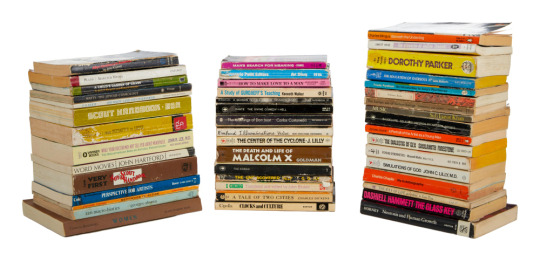


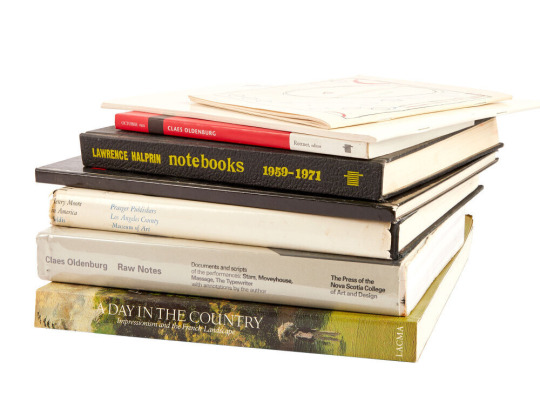
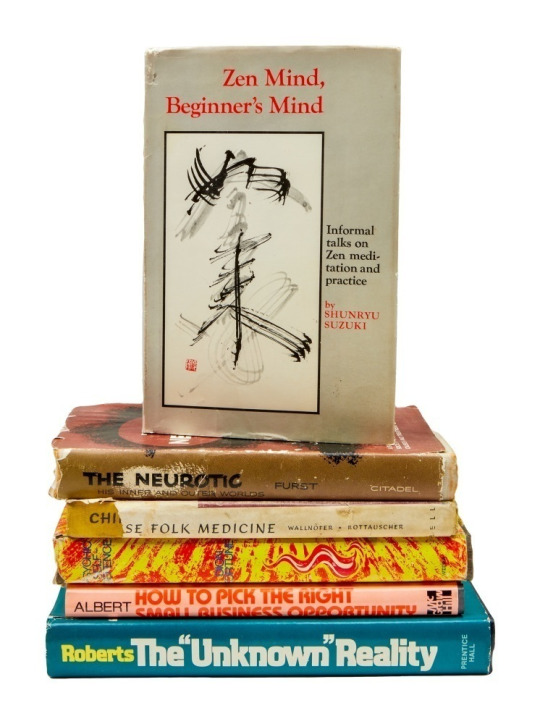
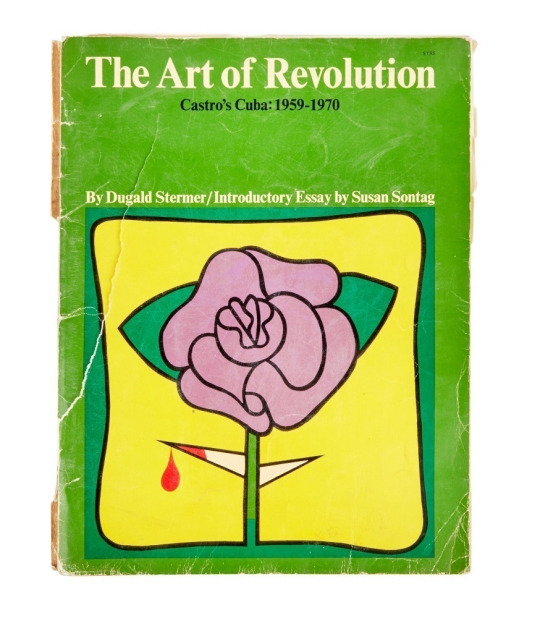
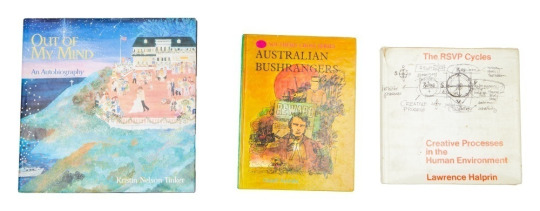



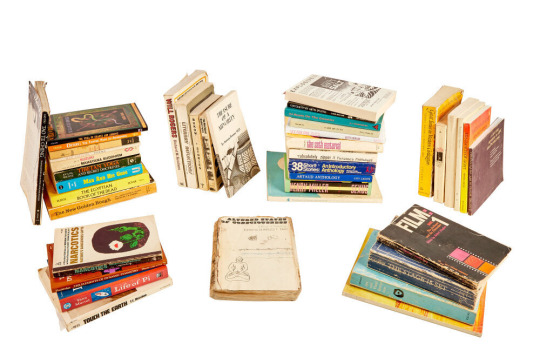
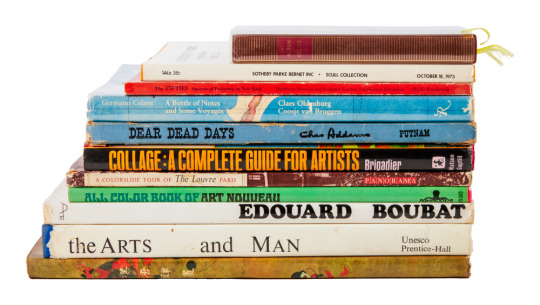
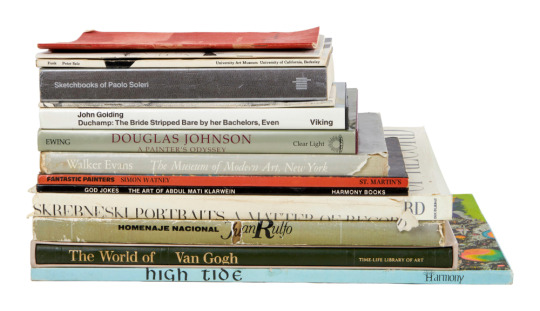
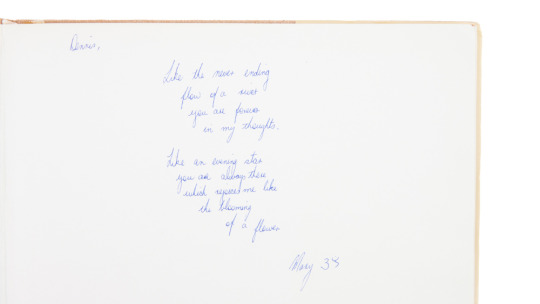
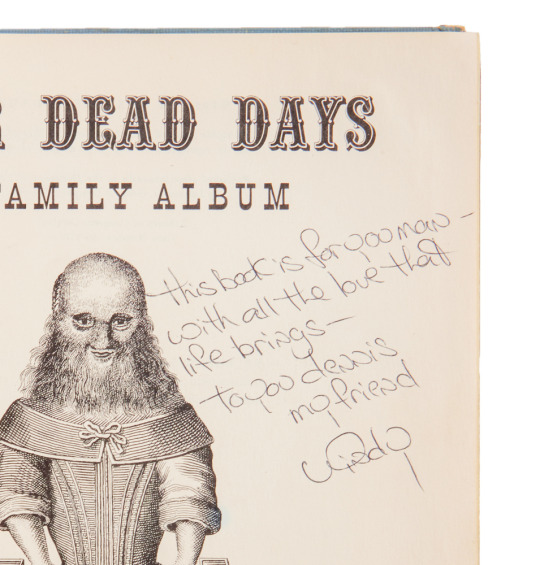
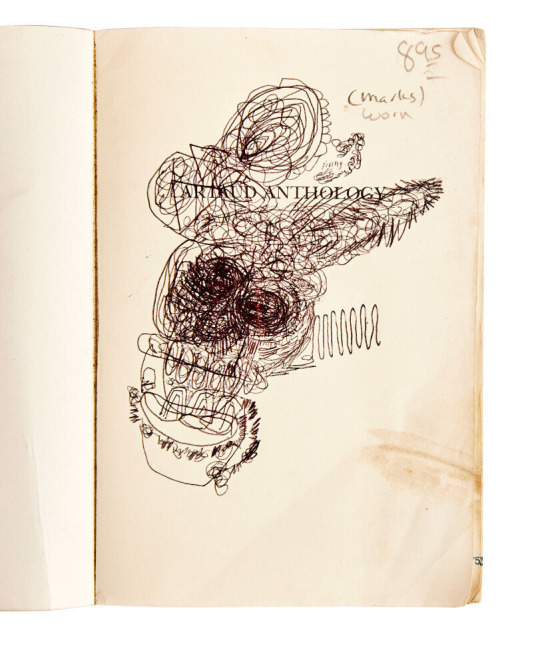
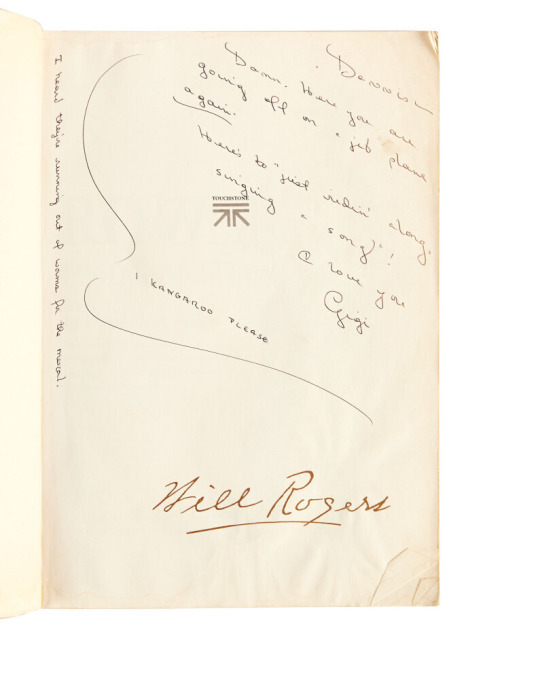
Dennis Hopper's collection of owned and gifted books (a few are listed under the cut)
Islands in the Stream (Charles Scribner's Sons, 1970)
Magic (Delacorte Press, 1976)
Sneaky People (Simon and Schuster, 1975)
Strange Peaches (Harper's Magazine Press, 1972)
I Didn't Know I Would Live So Long (Charles Scribner's Sons, 1973)
Baby Breakdown (The Bobbs-Merrill Company, Inc., 1970)
37 (Holt, Rinehart and Winston, 1970)
Presences: A Text for Marisol (Charles Scribner's Sons, 1970)
Little Prayers for Little Lips, The Book of Tao, The Bhagavadgita or The Song Divine, and Gems and Their Occult Power.
Lolita (G.P. Putnam's Sons, 1955)
The Dramas of Kansas (John F. Higgins, 1915)
Joy of Cooking (The Bobbs-Merrill Company, 1974)
The Neurotic: His Inner and Outer Worlds (First edition, Citadel Press, 1954)
Out of My Mind: An Autobiography (Harry N. Abrams, Inc., 1997)
The Savage Mind (University of Chicago Press, 1966)
Alive: The Story of the Andes Survivors (J.B. Lippincott Company, 1974)
The Documents of 20th Century Art: Dialogues with Marcel Duchamp (Viking Press, 1971)
The Portable Dorothy Parker, A Portrait of the Artist as a Young Man, I Ching, and How to Make Love to a Man.
John Steinbeck's East of Eden (Bantam, 1962)
James Dean: The Mutant King (Straight Arrow Books, 1974) by David Dalton
The Moviegoer (The Noonday Press, 1971)
Erections, Ejaculations, Exhibitions and General Tales of Ordinary Madness (City Light Books, 1974)
Narcotics Nature's Dangerous Gifts (A Delta Book, 1973)
The Egyptian Book of the Dead (Dover Publications, 1967)
Tibetan Yoga and Secret Doctrines (Oxford University Press, 1969)
Junky (Penguin Books, 1977) by William S. Burroughs
Weed: Adventures of a Dope Smuggler (Harper & Row, 1974)
Alcoholics Anonymous (Alcoholics Anonymous World Services, 1976)
Skrebneski Portraits - A Matter of Record, Sketchbooks of Paolo Soleri, and High Tide.
Raw Notes (The Press of the Nova Scotia College of Art and Design, 2005)
Le Corbusier (Heidi Weber, 1965)
Henry Moore in America (Praeger Publishers, 1973)
Claes Oldenburg (MIT Press, 2012)
Notebooks 1959 1971 (MIT Press, 1972)
A Day in the Country (Los Angeles County Museum of Art, 1985)
Album Celine (Gallimard, 1977)
A Selection of Fifity Works From the Collection of Robert C. Scull (Sotheby Parke Bernet, Inc. 1973)
Collage A Complete Guide for Artists (Watsun-Guptill Publications, 1970)
The Fifties Aspects of Painting in New York (Smithsonian Institution Press, 1980)
A Bottle of Notes and Some Voyages (Rizzoli International Publications, 1988)
All Color Book of Art Nouveau (Octopus Books, 1974)
A Colorslide Tour of The Louvre Paris (Panorama, 1960)
Dear Dead Days (G. P. Putnam's Sons, 1959)
Woman (Aidan Ellis Publishing Limited, 1972)
The Arts and Man ( UNESCO, 1969)
Murals From the Han to the Tang (Foreign Languages Press, 1974)
A (Grove Press Inc., 1968)
Andy Warhol's Index Book (Random House, 1967)
Voices (A Big Table Book, 1969)
Another Country (A Dell Book, circa 1960s)
On The Road (Signet, circa 1980s)
97 notes
·
View notes
Text
On this Day: Vienna Congress Edition
December 6th, 1814
Political
N/A
Other
high ranking members celebrate Grand Duchess Catherine of Oldenburg's birthday with a luncheon.
Count Razumovsky hosts a ball, which is attended by all the foreign Gentlemen. "In the evening a ball was given by the Russian Ambassador, Count Razumovsky, attended by all the foreign gentlemen. The archdukes asked whether there were supposed to come to this ball and if so, how they were to behave. The house steward requested a resolution from H.M stating that the archdukes were indeed supposed to attend the ball, but not dance. Instead, they were to mention that although they otherwise never went to balls during the advent season, they were attending in honor of the Emperor of Russia, who was going to be there." - Österreichisches Staatsarchiv, Haus-, Hof-, und Staatsarchiv, Vienna (HHStA), Zeremoniell Protokoll, 1814 and 1815.
6 notes
·
View notes
Text

Frederick V, King of Denmark (1723-1766)
Artist: David Morier (Swiss-born British, 1705?-1770)
Date: c. 1745-1751
Medium: Oil on canvas
Collection: Royal Collection Trust, United Kingdom
Frederick V of Denmark
Frederick V (Danish and Norwegian: Frederik V; 31 March 1723 – 14 January 1766) was King of Denmark and Norway and Duke of Schleswig-Holstein from 6 August 1746 until his death in 1766. A member of the House of Oldenburg, he was the son of Christian VI of Denmark and Sophie Magdalene of Brandenburg-Kulmbach.
#painting#equestrian portrait#oil on canvas#frederick v#king of denmark and norway#danish history#danish royal family#duke of scheleswig-holstein#house of oldenburg#landscape#horses#soldiers#men#costume#british culture#british art#oil painting#artwork#fine art#david morier#british painter#european art#18th century painting#royal collection trust
13 notes
·
View notes
Text

Prince Christian of Schleswig-Holstein (1831-1917) by William Charles Bell.
#william charles bell#house of schleswig holstein#art#portrait#House of Schleswig-Holstein-Sonderburg-Augustenburg#house of oldenburg#Slesvig-Holsten-Sønderborg-Augustenborg
4 notes
·
View notes
Text

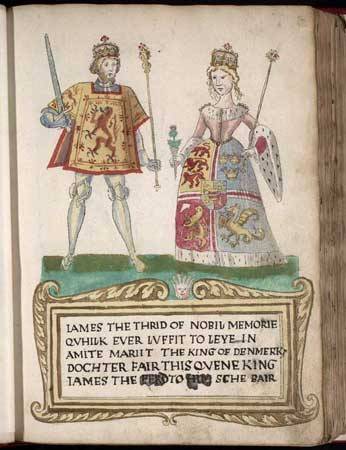
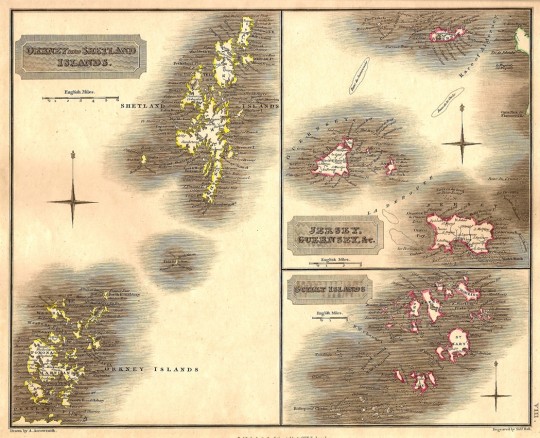
On 8th September 1468 King Christian I contracted the marriage of his only daughter Margaret Oldenburg, Princess of Denmark to James III.
The marriage ended up with The Northern Isles of Shetland and The Orkneys being ceded to Scotland.
After Norway was peaceably united with Denmark under King Christian I – his Oldenburg dynasty is still on the Danish throne – in 1450, he concentrated on building his empire in Scandinavia and seems to have had little time for his westernmost provinces of Orkney and Shetland. Christian also did not want any further warring with the Scots, and in 1468 a dynastic marriage was arranged between his 12-year-old daughter Margaret and James III – who had been on the throne since 1460 but who was still only 16 or 17. They married at The Palace of Holyrood House Abbey in 1469, a year after the signing of the Treaty of Copenhagen – sealing the friendship between Denmark/Norway and Scotland.
By that treaty, Margaret of Denmark’s dowry included the cancellation of debts allegedly owed by Scotland but most importantly King Christian offered 60,000 guilders or Rhenish Florins to James, with a mortgage secured on Orkney and Shetland. The first payment was due immediately after the marriage, but Christian was short of currency and the payment was not made. It seems he really did want shot of the islands ordered his subjects there to pay their taxes to the King of Scots until he could pay the redemption money. He never did pay up and effectively handed over the islands to Scotland.
James III also made it clear that he wanted the islands, and in 1470 he "persuaded" the Earl of Orkney, William Sinclair, to sign over his earldom to the king himself in return for some lands in Fife that included Ravenscraig Castle.
Now as Earl of Orkney – King Christian did not object – all that remained for James to do was to get the Scottish Parliament to formalise the annexation, and that finally happened in February 550 years ago.
The Shetland Museum and Archives website described what happened next:
“[James] promised that they shouldn’t be given away in time to come to anyone, except one of the king’s legitimate sons. His plan was that the islands should be governed by the Scottish crown, and administered on the king’s behalf by his own governors and tax-collectors – while leaving open the possibility that they might be gifted to a respectable nobleman sometime in the future. So in August the same year James appointed the bishop of Orkney, Andrew Pictoris, as his agent in Orkney and Shetland. King Christian didn’t complain.
“And something else happened, again in 1472, that was equally far-reaching. Six months after the annexation Pope Sixtus VI created an archbishopric in Scotland, based at St Andrews. He attached the bishopric of Orkney to it. At a stroke the ecclesiastical affairs of Orkney and Shetland had been taken over by the church in Scotland, just as their royal administration had been.”
Many nobles in Denmark and Norway were upset at King Christian for letting Orkney and Shetland go, and his successors King Hans and King Christian II were put under pressure to renounce the Treaty and take possession of the islands once again. They found excuses not to do so with Christian II being particularly hypocritical as he wrote to the islanders in 1514 that they were rightly under the crown of Norway despite being “pawned” to Scotland. It wasn’t until the 1660s that Denmark stopped claiming the islands.
For many decades Orkney and Shetland kept their own distinctly Norse polity, the islands have been part of Scotland since February 472, but the foundations for that were laid on this day in 1468.
The first pic is Christian, the couple are James III and Margaret.
7 notes
·
View notes
Text

Irene of Hesse to her brother Ernie from Petersburg (February/March 1886):
"March 11 / 27 [Feb] 1886
My dear Ernie, I am astonished at your being so good abt writing & delighted too. Last night Papa got your letter abt the Karnavalszug, wh. must have been very nice, & the newspapers. Last night at 11 Papa went off by train to shoot bears at some place or other & comes back to-night. This is the quiet week when Fasten beginns & everyone only eats fish & no butter & cream wh. is a real privation for Serge & Paul — but they only do it the first & last week. On Tuesday after having had supper at the Emperor’s we went at 9 to Eugénie, we, that is to say Papa, Ella Serge, Paul, & I. There with Eugénie, her husband, her son & his friend, Helene Scheremeteff, Helene Mecklenburg & some others we played frantikly Battledoor & Shuttlecock for prizes. Everyone had to play with Everybody wh. was great fun & we got dreadfully hot over it. Yesterday was the Emperor’s Birthday, we left the house at 1/4 to 11, Ella & I in square long gowns & drove to the Anitchkoff Palace where all the Relations were. Then all went to the Church there, & the singing was most beautiful. Even the Baby came for the service & she walks & runs about now & talks & has long fair curls & a most amusing little face. After the service there was a large dinner & everyone at different tables. When we came Ella & I changed & went with Papa to the Tauride for skating. Miche came there too & took me different times down the hills. Different people one knows come there & one skates abt. with them, Helene Mecklenburg was there too. Now goodbye — much love from all, Your loving Sis Irene"
"March 5 / 21 [Feb] 1886 Friday evening My dear Ernie, I was very much pleased to have Your dear letter & to hear how well you have amused yourself at the balls & that you also go to the theater. Ella’s ball was quite charming & she looked so lovely! We all danced like mad & got fearfully hot in consequence — everyone dances so terribly fast here & so ceaselessly — the only dances for wh. one has to engage people, are the 4 Françaises (wh. always have different figures at the end) & the Mazurka (wh. comes before supper & is really a Cotillon, as one gets rib[bJons & flowers then) & for the Cotillon one has to settle beforehand to have someone, (wh. is really a Francaise, when after each figure Wallt]z, & Polka are danced, you get rib[b]ons & flowers, have to make qualitiées & all sorts of things). I know now lots of people & You ought to see how bravely I run across the room to give any gentleman a little ribbon. The Moriers gave a charming ball for us, & he, the Papa, asked very much after You but you I should say do not remember him very well. Cotta has kept her red hair as ever, but looks very nice & Victor is enormously tall — the mother is grown stout & also not at all changed otherwise. Of Germans | have learnt to know Graf Vitzthum, who seems very nice, & of the Austrian Embassy Baron Gagern the nephew of Frau v. Edelsheim. This afternoon Ella & I paid a visit to Helene Sheremeteff & Eugenie Oldenburg, who asked after You — her boy Peter is very much grown, but we see little of him as also of the other Cousins all excepting Paul who is as dear as ever & is here every day for supper or lunch, for both sometimes, & who helps me on when I am forlorn at the balls. But to come back to Eugénie, her rooms are quite charming & she is also something of an artist. She paints, & burns on leather, on wood, on glass, & works on marble — a chimney piece for instance she showed us, wh. she has done for Alexis. First she draws a design on it, to wh. a background, then she carefully puts an acide on the latter wh. eats out round the design so that that stands out in relief, but as at some places the marble is softer than on others she puts gold as background when it is done & so the white pattern stands out beautifully. In like manner she works mettle things — draws the design first on it of course, puts a black acid over the whole, then scratches the black off the drawings so that where it remains everything is eaten away round it, & the drawing stands out in bright mettal, whilst the other keeps a duller look. To-morrow there is going to be a little dance here in the house again, but only a very few people come to it. There is pretty much electric light in the streets here, although not in all, & it looks just like moonlight. Everything is so nice & gemitlich in the house & Serge & Ella spoil me dreadfully. Matzen we eat together with delight & Maltzextract is disappearing fast between Ella & the Princess. Now I must close & hope you will like this long letter & excuse the large blots. Give love to all, also to M. H. J. to H. Muther, & remember me to H. v. Schwarzkoppen, love to dear Orchie & of course to the Uncles whom I hope you give all the news, especially to Uncle Henry. I remain, Your loving Sister Irene".
"In the Train Feb. 23 / 86
My dear Erinie, I wrote from Berlin to Alix, & so now to You. I hope You enjoyed Your ball, we were then still at Berlin & in the train. Uncle Fritz took us to the station, & Sir Edward Malet, Mr Scot, & Col. Swain[e] were there, also H. v. Knesebeck who was as white as a sheet & really looked like a ghost, his black eyes shone so & he is much balder. He enquired after all, especially after you & also Herr Muther & even after Mary Adams, Plotzer & Kratz. At Eidkuhnen General Mérder, & Col. Biblikoff (a very handsome dark man) received us & we got into The Russian Specialtrain wh. is very much like the one of last time. The Enrenwache was also at Wirballen. Soon after we left we had “sakuska” & supper, wh. was very welcome, as I was very hungry. Two generals, Commandeur der 2me. Corps Driesen (a charming man der sich im Turkischen Krieg ausgezeichnet hat) & the other general Meiendorf. They got out at Vilna, but before that I went to bed dreadfully tired. It was rather hot in the carriages after the cold German ones. Old Morder brought letters from Ella & on Tuesday (to-day is already Monday) Alexe gives a ball for whom she is to help doing the honneurs of his new house. I am writing & spelling dreadfully, but with all & the perpetual shaking I have difficulty to think & I am sure You will prefer a badly spelt letter to none at all. We had 15- of cold in the night, & now there are only 7- with the deepest of blue skys & charming sunshine. It hurts one’s eyes to look on the dazzling snow. At Gatschina Ella & Serge meet us, wh. is very soon & I only wish it could have been with You all that we meet. Now I must close & if possible will add a few lines later. Love to Victoria, Ludwig, a kiss for dear Baby & Alix, & yourself, love to M. H. J. to H. Muther, remember me also to H. v. Schwarzkoppen, & of course my love to Nan. I remain Your loving Sis Irene All seems like a dream!"
6 notes
·
View notes
Text

Footnotes, 151 - 200
[151] See Post, Afrikanische Jurisprudenz, Oldenburg, 1887. Münzinger, Ueber das Recht und Sitten der Bogos, Winterthur” 1859; Casalis, Les Bassoutos, Paris, 1859; Maclean, Kafir Laws and Customs, Mount Coke, 1858, etc.
[152] Waitz, iii. 423 seq.
[153] Post’s Studien zur Entwicklungsgeschichte des Familien Rechts Oldenburg, 1889, pp. 270 seq.
[154] Powell, Annual Report of the Bureau of Ethnography, Washington, 1881, quoted in Post’s Studien, p. 290; Bastian’s Inselgruppen in Oceanien, 1883, p. 88.
[155] De Stuers, quoted by Waitz, v. 141.
[156] W. Arnold, in his Wanderungen und Ansiedelungen der deutschen Stämme, p. 431, even maintains that one-half of the now arable area in middle Germany must have been reclaimed from the sixth to the ninth century. Nitzsch (Geschichte des deutschen Volkes, Leipzig, 1883, vol. i.) shares the same opinion.
[157] Leo and Botta, Histoire d’Italie, French edition, 1844, t. i., p. 37.
[158] The composition for the stealing of a simple knife was 15 solidii and of the iron parts of a mill, 45 solidii (See on this subject Lamprecht’s Wirthschaft und Recht der Franken in Raumer’s Historisches Taschenbuch, 1883, p. 52.) According to the Riparian law, the sword, the spear, and the iron armor of a warrior attained the value of at least twenty-five cows, or two years of a freeman’s labor. A cuirass alone was valued in the Salic law (Desmichels, quoted by Michelet) at as much as thirty-six bushels of wheat.
[159] The chief wealth of the chieftains, for a long time, was in their personal domains peopled partly with prisoner slaves, but chiefly in the above way. On the origin of property see Inama Sternegg’s Die Ausbildung der grossen Grundherrschaften in Deutschland, in Schmoller’s Forschungen, Bd. I., 1878; F. Dahn’s Urgeschichte der germanischen und romanischen Völker, Berlin, 1881; Maurer’s Dorfverfassung; Guizot’s Essais sur l’histoire de France; Maine’s Village Community; Botta’s Histoire d’Italie; Seebohm, Vinogradov, J. R. Green, etc.
[160] See Sir Henry Maine’s International Law, London, 1888.
[161] Ancient Laws of Ireland, Introduction; E. Nys, Études de droit international, t. i., 1896, pp. 86 seq. Among the Ossetes the arbiters from three oldest villages enjoy a special reputation (M. Kovalevsky’s Modern Custom and Old Law, Moscow, 1886, ii. 217, Russian).
[162] It is permissible to think that this conception (related to the conception of tanistry) played an important part in the life of the period; but research has not yet been directed that way.
[163] It was distinctly stated in the charter of St. Quentin of the year 1002 that the ransom for houses which had to be demolished for crimes went for the city walls. The same destination was given to the Ungeld in German cities. At Pskov the cathedral was the bank for the fines, and from this fund money was taken for the wails.
[164] Sohm, Fränkische Rechts- und Gerichtsverfassung, p. 23; also Nitzsch, Geschechte des deutschen Volkes, i. 78.
[165] See the excellent remarks on this subject in Augustin Thierry’s Lettres sur l’histoire de France. 7th Letter. The barbarian translations of parts of the Bible are extremely instructive on this point.
[166] Thirty-six times more than a noble, according to the Anglo-Saxon law. In the code of Rothari the slaying of a king is, however, punished by death; but (apart from Roman influence) this new disposition was introduced (in 646) in the Lombardian law — as remarked by Leo and Botta — to cover the king from blood revenge. The king being at that time the executioner of his own sentences (as the tribe formerly was of its own sentences), he had to be protected by a special disposition, the more so as several Lombardian kings before Rothari had been slain in succession (Leo and Botta, l.c., i. 66–90).
[167] Kaufmann, Deutsche Geschichte, Bd. I. “Die Germanen der Urzeit,” p. 133.
[168] Dr. F. Dahn, Urgeschichte der germanischen und romanischen Völker, Berlin, 1881, Bd. I. 96.
[169] If I thus follow the views long since advocated by Maurer (Geschichte der Städteverfassung in Deutschland, Erlangen, 1869), it is because he has fully proved the uninterrupted evolution from the village community to the medieval city, and that his views alone can explain the universality of the communal movement. Savigny and Eichhorn and their followers have certainly proved that the traditions of the Roman municipia had never totally disappeared. But they took no account of the village community period which the barbarians lived through before they had any cities. The fact is, that whenever mankind made a new start in civilization, in Greece, Rome, or middle Europe, it passed through the same stages — the tribe, the village community, the free city, the state — each one naturally evolving out of the preceding stage. Of course, the experience of each preceding civilization was never lost. Greece (itself influenced by Eastern civilizations) influenced Rome, and Rome influenced our civilization; but each of them begin from the same beginning — the tribe. And just as we cannot say that our states are continuations of the Roman state, so also can we not say that the mediæval cities of Europe (including Scandinavia and Russia) were a continuation of the Roman cities. They were a continuation of the barbarian village community, influenced to a certain extent by the traditions of the Roman towns.
[170] M. Kovalevsky, Modern Customs and Ancient Laws of Russia (Ilchester Lectures, London, 1891, Lecture 4).
[171] A considerable amount of research had to be done before this character of the so-called udyelnyi period was properly established by the works of Byelaeff (Tales from Russian History), Kostomaroff (The Beginnings of Autocracy in Russia), and especially Professor Sergievich (The Vyeche and the Prince). The English reader may find some information about this period in the just-named work of M. Kovalevsky, in Rambaud’s History of Russia, and, in a short summary, in the article “Russia” of the last edition of Chambers’s Encyclopædia.
[172] Ferrari, Histoire des révolutions d’Italie, i. 257; Kallsen, Die deutschen Städte im Mittelalter, Bd. I. (Halle, 1891).
[173] See the excellent remarks of Mr. G.L. Gomme as regards the folkmote of London (The Literature of Local Institutions, London, 1886, p. 76). It must, however, be remarked that in royal cities the folkmote never attained the independence which it assumed elsewhere. It is even certain that Moscow and Paris were chosen by the kings and the Church as the cradles of the future royal authority in the State, because they did not possess the tradition of folkmotes accustomed to act as sovereign in all matters.
[174] A. Luchaire, Les Communes françaises; also Kluckohn, Geschichte des Gottesfrieden, 1857. L. Sémichon (La paix et la trève de Dieu, 2 vols., Paris, 1869) has tried to represent the communal movement as issued from that institution. In reality, the treuga Dei, like the league started under Louis le Gros for the defense against both the robberies of the nobles and the Norman invasions, was a thoroughly popular movement. The only historian who mentions this last league — that is, Vitalis — describes it as a “popular community” (“Considérations sur l’histoire de France,” in vol. iv. of Aug. Thierry’s Œuvres, Paris, 1868, p. 191 and note).
[175] Ferrari, i. 152, 263, etc.
[176] Perrens, Histoire de Florence, i. 188; Ferrari, l.c., i. 283.
[177] Aug. Thierry, Essai sur l’histoire du Tiers État, Paris, 1875, p. 414, note.
[178] F. Rocquain, “La Renaissance au XIIe siècle,” in Études sur l’histoire de France, Paris, 1875, pp. 55–117.
[179] N. Kostomaroff, “The Rationalists of the Twelfth Century,” in his Monographies and Researches (Russian).
[180] Very interesting facts relative to the universality of guilds will be found in “Two Thousand Years of Guild Life,” by Rev. J. M. Lambert, Hull, 1891. On the Georgian amkari, see S. Eghiazarov, Gorodskiye Tsekhi (“Organization of Transcaucasian Amkari”), in Memoirs of the Caucasian Geographical Society, xiv. 2, 1891.
[181] J.D. Wunderer’s “Reisebericht” in Fichard’s Frankfurter Archiv, ii. 245; quoted by Janssen, Geschichte des deutschen Volkes, i. 355.
[182] Dr. Leonard Ennen, Der Dom zu Köln, Historische Einleitung, Köln, 1871, pp. 46, 50.
[183] See previous chapter.
[184] Kofod Ancher, Om gamle Danske Gilder og deres Undergâng, Copenhagen, 1785. Statutes of a Knu guild.
[185] Upon the position of women in guilds, see Miss Toulmin Smith’s introductory remarks to the English Guilds of her father. One of the Cambridge statutes (p. 281) of the year 1503 is quite positive in the following sentence: “Thys statute is made by the comyne assent of all the bretherne and sisterne of alhallowe yelde.”
[186] In mediæval times, only secret aggression was treated as a murder. Blood-revenge in broad daylight was justice; and slaying in a quarrel was not murder, once the aggressor showed his willingness to repent and to repair the wrong he had done. Deep traces of this distinction still exist in modern criminal law, especially in Russia.
[187] Kofod Ancher, l.c. This old booklet contains much that has been lost sight of by later explorers.
[188] They played an important part in the revolts of the serfs, and were therefore prohibited several times in succession in the second half of the ninth century. Of course, the king’s prohibitions remained a dead letter.
[189] The mediæval Italian painters were also organized in guilds, which became at a later epoch Academies of art. If the Italian art of those times is impressed with so much individuality that we distinguish, even now, between the different schools of Padua, Bassano, Treviso, Verona, and so on, although all these cities were under the sway of Venice, this was due — J. Paul Richter remarks — to the fact that the painters of each city belonged to a separate guild, friendly with the guilds of other towns, but leading a separate existence. The oldest guild-statute known is that of Verona, dating from 1303, but evidently copied from some much older statute. “Fraternal assistance in necessity of whatever kind,” “hospitality towards strangers, when passing through the town, as thus information may be obtained about matters which one may like to learn,” and “obligation of offering comfort in case of debility” are among the obligations of the members (Nineteenth Century, Nov. 1890, and Aug. 1892).
[190] The chief works on the artels are named in the article “Russia” of the Encyclopædia Britannica, 9th edition, p. 84.
[191] See, for instance, the texts of the Cambridge guilds given by Toulmin Smith (English Guilds, London, 1870, pp. 274–276), from which it appears that the “generall and principall day” was the “eleccioun day;” or, Ch. M. Clode’s The Early History of the Guild of the Merchant Taylors, London, 1888, i. 45; and so on. For the renewal of allegiance, see the Jómsviking saga, mentioned in Pappenheim’s Altdänische Schutzgilden, Breslau, 1885, p. 67. It appears very probable that when the guilds began to be prosecuted, many of them inscribed in their statutes the meal day only, or their pious duties, and only alluded to the judicial function of the guild in vague words; but this function did not disappear till a very much later time. The question, “Who will be my judge?” has no meaning now, since the State has appropriated for its bureaucracy the organization of justice; but it was of primordial importance in mediæval times, the more so as self-jurisdiction meant self-administration. It must also be remarked that the translation of the Saxon and Danish “guild-bretheren,” or “brodre,” by the Latin convivii must also have contributed to the above confusion.
[192] See the excellent remarks upon the frith guild by J.R. Green and Mrs. Green in The Conquest of England, London, 1883, pp. 229–230.
[193] See Appendix X.
[194] Recueil des ordonnances des rois de France, t. xii. 562; quoted by Aug. Thierry in Considérations sur l’histoire de France, p. 196, ed. 12mo.
[195] A. Luchaire, Les Communes françaises, pp, 45–46.
[196] Guilbert de Nogent, De vita sua, quoted by Luchaire, l.c., p. 14.
[197] Lebret, Histoire de Venise, i. 393; also Marin, quoted by Leo and Botta in Histoire de l’Italie, French edition, 1844, t. i 500.
[198] Dr. W. Arnold, Verfassungsgeschichte der deutschen Freistädte, 1854, Bd. ii. 227 seq.; Ennen, Geschichte der Stadt Koeln, Bd. i. 228–229; also the documents published by Ennen and Eckert.
[199] Conquest of England, 1883, p. 453.
[200] Byelaeff, Russian History, vols. ii. and iii.
#organization#revolution#mutual aid#anarchism#daily posts#communism#anti capitalist#anti capitalism#late stage capitalism#anarchy#anarchists#libraries#leftism#social issues#economy#economics#climate change#anarchy works#environmentalism#environment#solarpunk#anti colonialism#a factor of evolution#petr kropotkin
13 notes
·
View notes
Text
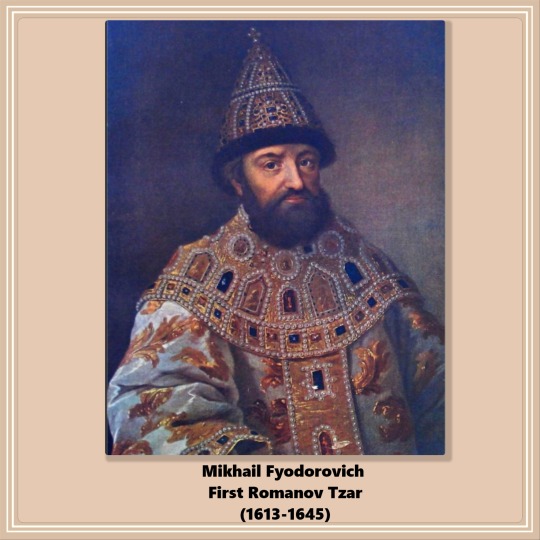




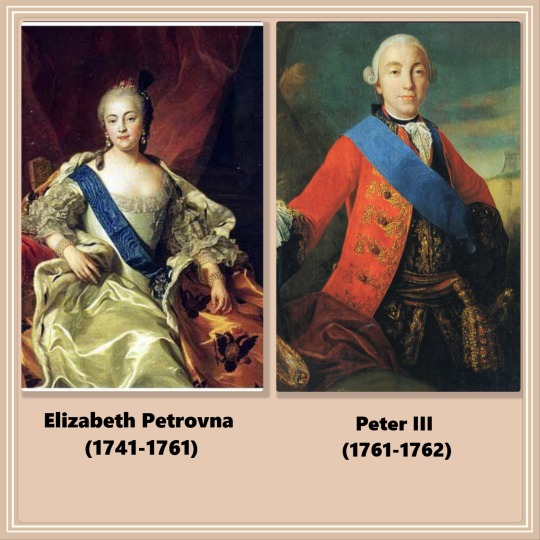

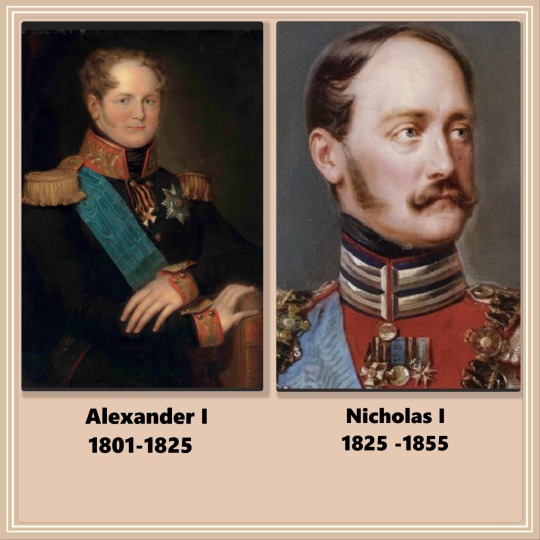

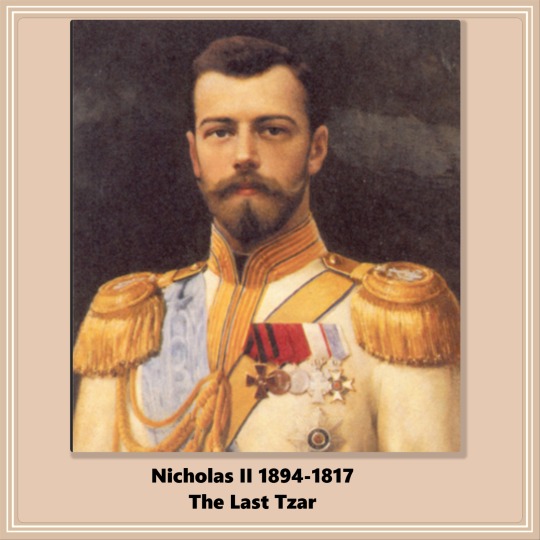
👑The Romanov Dynasty
The Grand Duchy of Moscow under Prince Ivan III was the first unified state on Russian territory. With him began the Rurikid Dynasty (the Rurikid had been around for a long time along hoards of tartars).
The Rurikid ruled from the 1400s until the 1600s. Ivan III can be considered the founder of Russia. While the Rurikid were in power, the Romanovs were boyars (nobles) in their courts. When the Ruriks became extinct, the Romanovs took over. The "Zemsky Sorbor" (a rudimentary parliament) elected Mikhail Feodorovich as the first Romanov Tzar.
The direct male line of the Romanovs ended with Elizabeth of Russia, who was childless. Her nephew Peter III, a member of the House of Holstein-Gottorp (a cadet branch of the German House of Oldenburg that reigned in Denmark), ascended to the throne and adopted his Romanov mother���s house name. Descendants after Elizabeth are sometimes referred to as "Holstein-Gottorp-Romanov."
The above is a gross oversimplification of a very complex course of events.
Highlights about each Romanov Tsar/Tsarina:
👑Mikhail Feodorovich (1613 - 1645): First Romanov Tsar
👑Alexei Mikhailovich (1645 - 1676): Encouraged trade and cooperation with Europe. Father of Peter the Great
👑Feodor III (1676 - 1682): Had very poor health and spent most of his reign in bed
👑Peter I and 👑 Ivan V (1689 - 1785): It was complicated. The two of them were Tsars under the regency of their older sister Sophia.
👑Peter I (1689-1725): Reformed Russia's politics, government, and culture. Made Russia a military power.
👑Catherine I (1725-1727): At the time of Peter the Great's death, the mechanism for succession consisted of the Tsar selecting his successor, but Peter did not elect one before dying. His wife became the Tsarina, but others governed through her.
👑Peter II (1727-1730): Peter's grandson; ascended the throne at 11 and died at 14. The "Privy Council" or "Soviet" ruled through him.
👑Anna Ioannovna (1730-1740): Daughter of Peter's half-brother Ivan. The Privy Council invited her to rule (wanting her to be a puppet), but she disbanded them and ruled herself successfully.
👑Ivan VI (1740-1741): One-year-old son of Ana's niece. She left the throne to him, expecting his mother to govern. Elizabeth, daughter of Peter the Great, deposed him (and his mother.)
👑Elizabeth Petrovna (1741-1761): Last Russian on the Russian throne; her twenty-year reign was successful.
👑Peter III (1761-1762): Grandson of Peter the Great and next in line for the throne after Elizabeth. Ruled for only half a year before being deposed by his wife, Catherine. He was murdered soon after the coup d’etat.
👑Catherine the Great (1762-1796): Her accomplishment went from the Empire’s territorial expansion to political development to the proliferation of sciences. However, the Empire had an enormous external debt by the end of her reign.
👑Paul I (1796-1801): Paul, the son of Catherine the Great and Peter III, became Emperor at 42 after the death of his mother. He started a lot of major military and political reforms. Paul was murdered in a coup d'etat. Paul decreed house laws for the Romanovs (the Pauline laws) – among the strictest in Europe – which established semi-Salic primogeniture and required Orthodox faith for the monarch and dynasts
👑Alexander I (1801-1825): During his reign, Russia defeated Napoleon's forces (which got as far as Moscow in their attempt to conquer Russia.) There was also great development in culture and arts.
👑Nicholas I (1825-1855): Paul I’s third son, younger brother of Alexander. Started railroad construction in Russia, boosting industrialization. Codified Russian laws and reformed finances.
👑Alexander II (1855-1881): His major reforms included the peasant emancipation of 1861, military reform, and the introduction of new types of self-governing village societies and more. Unfortunately, he fell victim to a terrorist after five attempts.
👑Alexander III (1881-1894): Russia didn’t enter any wars in his time. His domestic policy was conservative. He amended the Pauline laws. The economy flourished. But the revolution was brewing below the surface.
👑Nicholas II (1894-1917): His policies were unsuccessful. Established the first official Duma in 1905, but it was too little too late. With the advent of WWI, the Russian Empire ceased to exist. He abdicated. (gcl)
Sources:
Panov, A., Delaroche, P., & Abramuchkin, Y. (2021, July 31). The Complete List of Russian Tsars, Emperors, and Presidents. Russia Beyond. Retrieved June 20, 2023, from https://www.rbth.com/history/334065-complete-list-of-russian-tsars-emperors-rulers-presidents
#russian history#imperial russia#romanov dynasty#Nicholas II#Alexander III#Alexander II#Alexander I#Catherine I#Catherine II#Nicholas I#Paul III#Elizabeth Petrovna#Mikhail Feodorovich#Alexei Mikhailovich#Feodor III#Ivan VI#Peter I#Peter II#Peter III#Anna Ioannovna#Romanov Tsars#gcl
37 notes
·
View notes